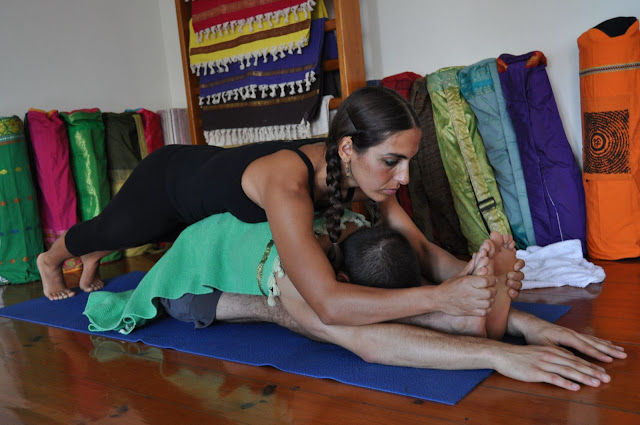Yama, the first limb, consists of five parts: ahimsa, satya, asteya, bramacharya, and aparigraha
Ahimsa
Ahimsa means not causing injury to anyone, including animals, in any form, at any time, or for any reason, in word ,thought or deed. If an injury has Vedic sanction, it does not constitute ahimsa. Two animals hostile to each other will forget their hostility in the vicinity of those who practice absolute ahimsa.
Ahimsa pratishthayam tat sannidhou vairatyagah (Upon being established in non-hurtfulness, there is a relinquishing of hostility in the presence of that (ahimsa) - Patanjali yoga sutras ii : 35
Satya
What is satya? Satya is truthfulness. One should always tell the truth in though, word, and deed. The truth must be plesant to others, an unplesant truth should not be uttered. If one follows the truth in this manner, all one´s word will become true and all one´s desires will be fulfilled.
Satya pratishthayam kriya phala shrayatvam (Upon being established in truth, there is surety in the result of actions). Patanjali Yoga Sutras ii : 36
Asteya
Asteya means not stealing the porperty or possessions of others. Being envious of or begrudging, cheating someone with sweet words; gaining selfish ends under the guise of truthfulness: are all to be abandoned. Heaps of gems fall before the yogi who practice asteya, and he become the abode of all gems.
Asteya pratishthayam sarvaratna upasthanam. ( Upon being established in non stealing, there occurs the attainment of all posperity.) - Patanjali Yoga Sutras ii : 37
continue...
Ler mais »
Ahimsa
Ahimsa means not causing injury to anyone, including animals, in any form, at any time, or for any reason, in word ,thought or deed. If an injury has Vedic sanction, it does not constitute ahimsa. Two animals hostile to each other will forget their hostility in the vicinity of those who practice absolute ahimsa.
Ahimsa pratishthayam tat sannidhou vairatyagah (Upon being established in non-hurtfulness, there is a relinquishing of hostility in the presence of that (ahimsa) - Patanjali yoga sutras ii : 35
Satya
What is satya? Satya is truthfulness. One should always tell the truth in though, word, and deed. The truth must be plesant to others, an unplesant truth should not be uttered. If one follows the truth in this manner, all one´s word will become true and all one´s desires will be fulfilled.
Satya pratishthayam kriya phala shrayatvam (Upon being established in truth, there is surety in the result of actions). Patanjali Yoga Sutras ii : 36
Asteya
Asteya means not stealing the porperty or possessions of others. Being envious of or begrudging, cheating someone with sweet words; gaining selfish ends under the guise of truthfulness: are all to be abandoned. Heaps of gems fall before the yogi who practice asteya, and he become the abode of all gems.
Asteya pratishthayam sarvaratna upasthanam. ( Upon being established in non stealing, there occurs the attainment of all posperity.) - Patanjali Yoga Sutras ii : 37
continue...












